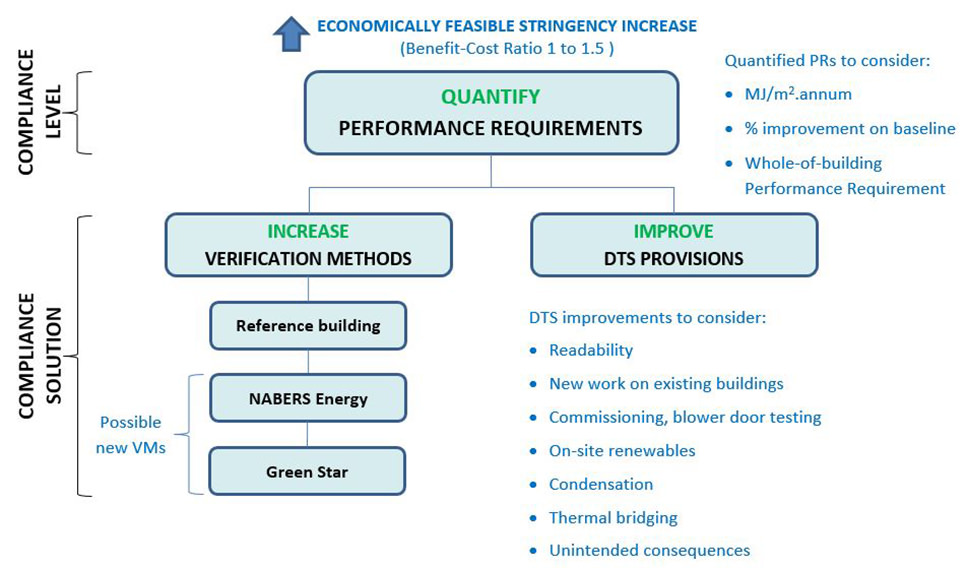Significant energy and greenhouse gas emission savings are anticipated from the commercial building energy efficiency changes proposed for NCC 2019. What’s involved and what do you need to know?
The proposed changes
The project has a commercial and a residential component, with the commercial building changes targeting the common areas of apartment buildings (Class 2 buildings), Class 3 buildings and Class 5 to 9 buildings.
The commercial component of the project is centred on introducing an economically feasible stringency increase at a 1 to 1.5 Benefit-Cost Ratio. Research shows that a stringency increase at this time is likely to be cost-effective and produce energy savings of around 23 to 53 percent (this is based on a medium carbon price scenario and a learning rate of 3% p.a. for 10 years).
Further changes are proposed to the commercial energy efficiency requirements, which are aimed at increasing the flexibility of the requirements and the number of compliance options available. This will promote innovation, reduce ‘red tape’ for industry and improve interpretation and compliance with the NCC provisions.
This will be achieved through:
- Quantification of the mandatory Performance Requirements
- Introducing a NABERS Energy Commitment Agreement Verification Method
- Introducing a Green Star Verification Method
- Introducing commissioning requirements
- Improved consideration of on-site renewables such as photovoltaics
- Improved thermal bridging requirements, and simpler Deemed-to-Satisfy (DTS) Provisions.
Refer to the ‘NCC 2019 Commercial Energy Efficiency Provisions’ diagram below for the proposed changes at a glance.

When are these changes coming into effect?
All proposed technical changes will be available for public consultation, together with a Consultation Regulatory Impact Statement (RIS) from February 2018. This will be the opportunity to have your say on the proposed changes. The final changes will be released in February 2019, and come into effect on 1 May 2019.
Why are the changes occurring?
The ABCB’s Energy Efficiency initiative was initiated as a result of Measure 31 of the Council of Australian Governments National Energy Productivity Plan. This project forms part of the Australian Governments broader strategy to reduce greenhouse gases and improve energy productivity.
All proposed changes will be subject to economic analysis as part of the development of a Consultation RIS, which will be developed in accordance with the Office of Best Practice Regulation guidelines. Any unintended consequences as a result of the proposed technical changes will also be considered.
In summary, all of Section J in NCC Volume One is expected to be significantly improved.


